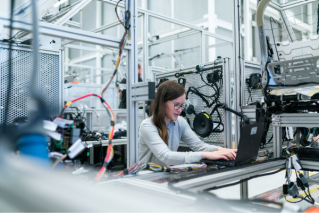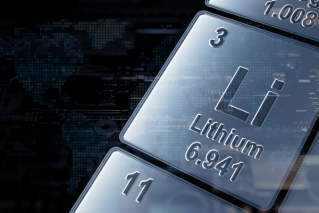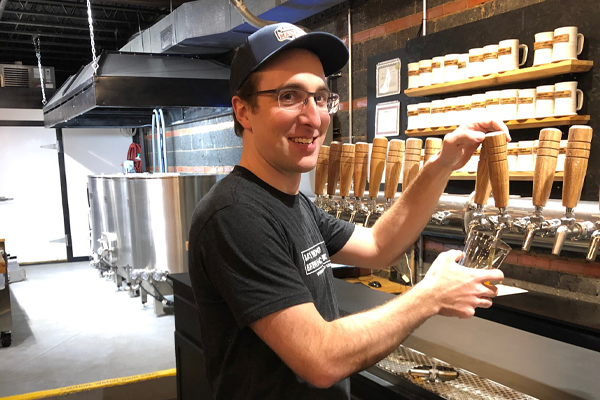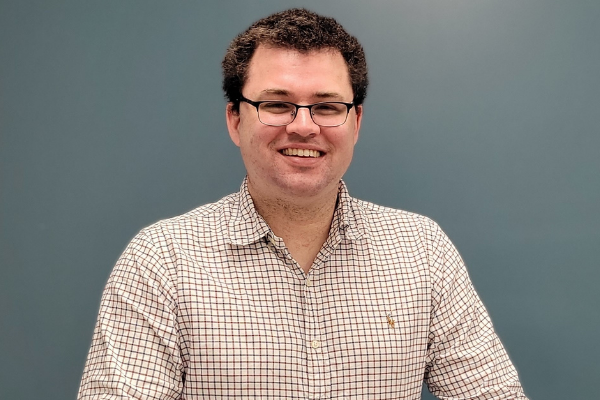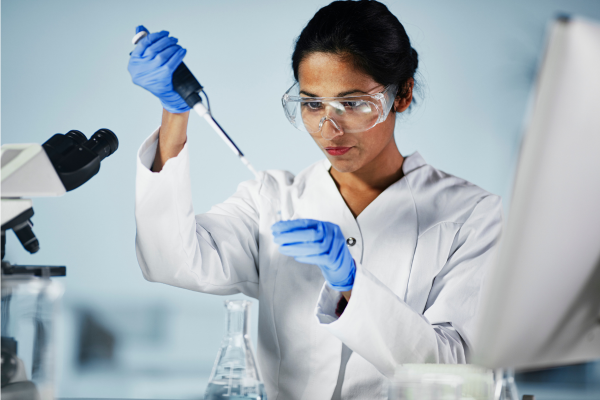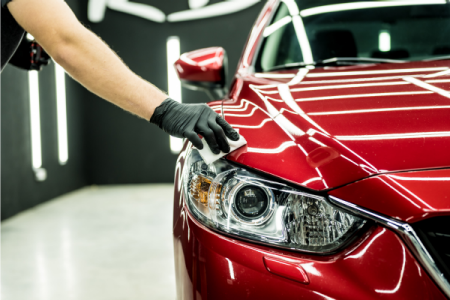
Magnesium use in the transport sector is accelerating, in part because the metal is 33% lighter than aluminum and 75% lighter than steel. “That's important from an environmental perspective,” explains PPG Industries research chemist Rachel Harris, because “you can get better gas mileage from a car or make planes more fuel efficient.”
But switching metals poses a challenge to those who make coatings for cars or planes: different metals have different surface chemistries. “We have to reformulate the entire paint stack when the chemistry of the substrate changes,” Harris says. “The goal of my research is to formulate anticorrosion coatings for newer, lighter alloys.”
Harris joined PPG in 2017 after a PhD probing surfaces in Emily Weiss’s group at Northwestern University. “I studied the relationship between quantum dot surface chemistry and optoelectronic properties,” Harris says. The company placed her in its substrate protection group. “It ended up being a really good fit for me,” she says.
The most significant day-to-day difference between her academic and industrial research is the reaction scale. “In graduate school, I would do reactions in 7 mL vials,” Harris says. “Now my typical reaction vessel is a 3 or 5 gal [11 or 19 L] bucket.” Ultimately, her formulations are used in 50,000 gal [190,000 L] tanks on the factory floor.
Rapid-fire Q&A:
What's your favorite laboratory instrument?
The ultraviolet-visible spectrophotometer. I used it a lot in my PhD program. It's a very simple and quick way to find out a lot about the electronic structure of a material.
Who's your scientific hero?
Richard Feynman, because of his talent for explaining complicated ideas to a general audience.
What's the best part of your job?
The people that I work with.
What do you have in your lab coat pocket?
I have two tongue depressors, some nitrile gloves, three Sharpies, two pens, and a pair of tweezers.
What was the last experiment you ran?
To test a new pretreatment formulation for both magnesium and steel. Currently there isn't chemistry that works well for preventing corrosion on both of those metals, so developing a process for mixed metals is time- and money-saving.
What is your proudest career moment to date?
Defending my thesis.
Are there any parts of your job that aren't quite what you expected?
The level of confidentiality. In academia, exchange of information is very free; you don't need to have a filter for what you talk about and who you talk about it with. Whereas in industry, there are things like trade secrets because competition is so high. It has been a really interesting learning experience for me to navigate those waters.
How would you describe yourself?
Curious, creative, artistic, and organized.
Do you prefer music or quiet in the lab?
Definitely music and really loud. I tend to switch between top 40 hits from 2009 (it was a really good year for hip-hop) and classics like Motown hits—Motown’s good lab music since it tends to be a crowd-pleaser.
What is the most unusual thing that PPG designs coatings for?
Caskets and toilet seats. But I haven't personally worked on coatings for either.
What are your hidden talents?
I can juggle up to four objects at a time.

Nina Notman is a freelancer, based in the UK, for Chemical & Engineering News, the newsmagazine of the American Chemical Society. This interview was edited for length and clarity.


